

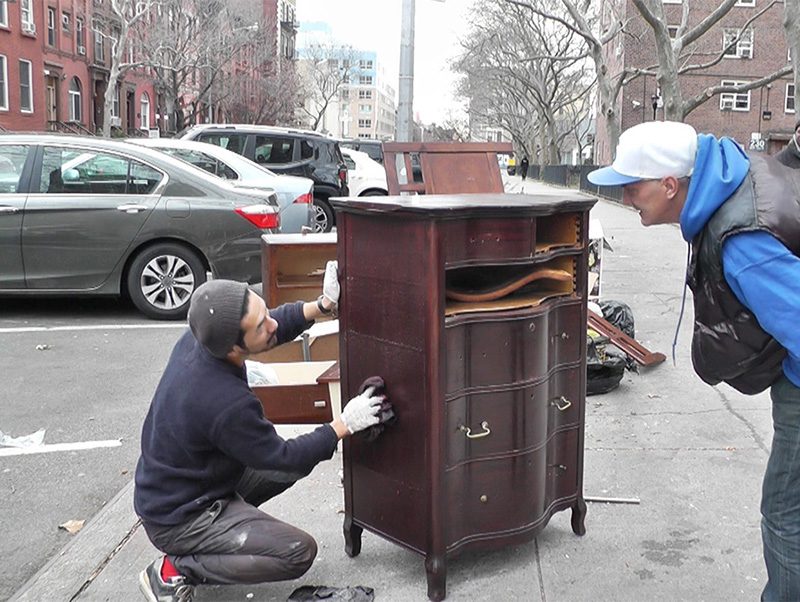
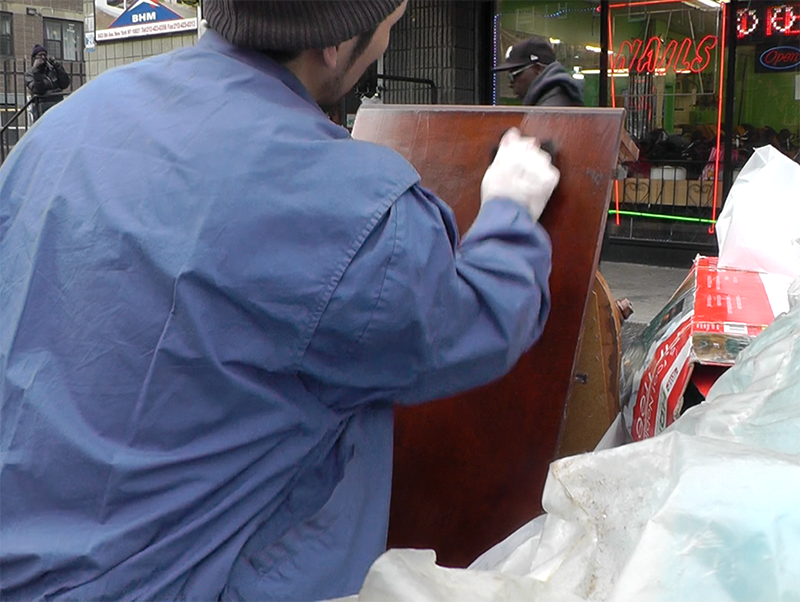
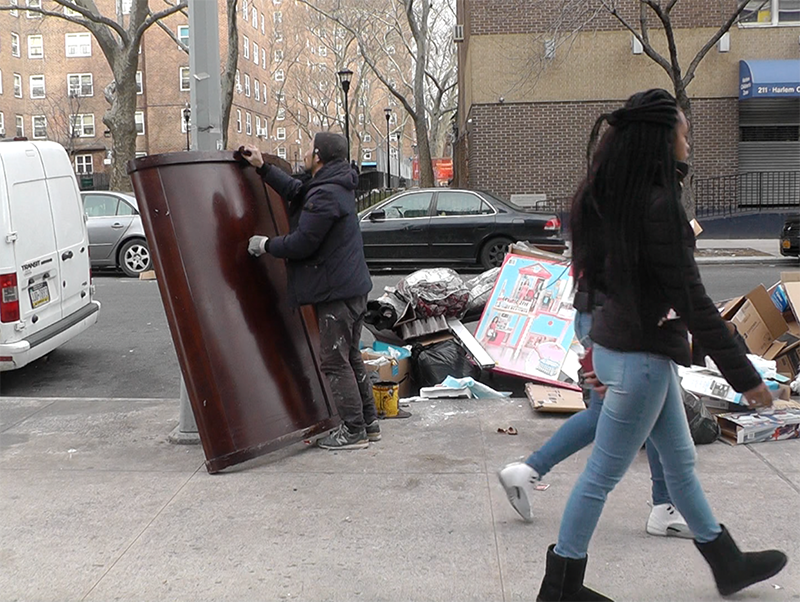
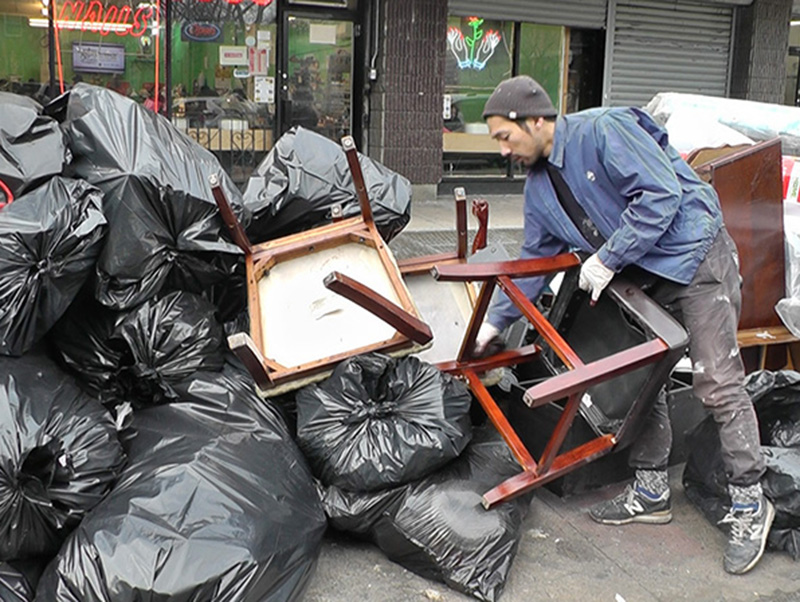



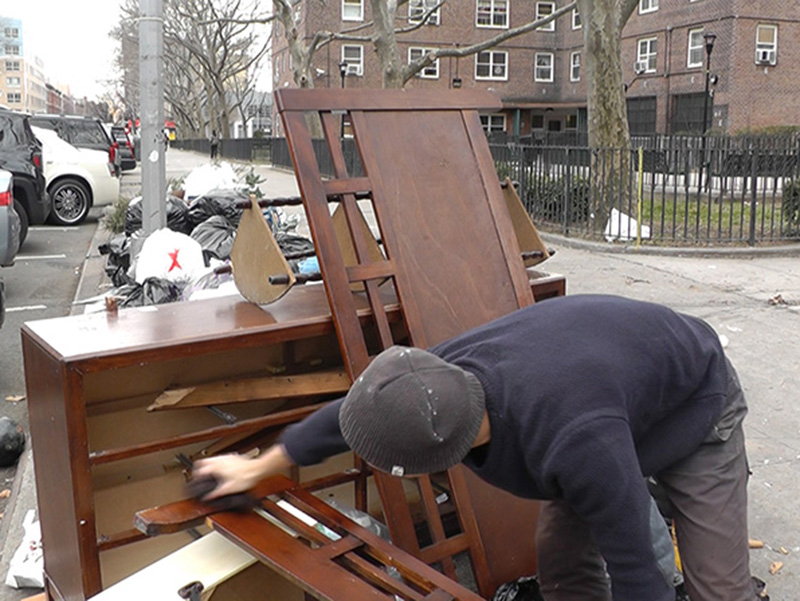
古い建物を改修し、色のはげた木の床に茶色の塗料を塗る作業を行っている時であった。その作業に没頭する中で、褐色に求める"自然さ"は崩壊していった。しかし、公団住宅が立ち並ぶ地区で、毎日のように捨てられていた木製の家具を見て、そうした色に対する違和感は再び消えて無くなった。なぜなら無造作に置かれたゴミは、その色である必要を失い、同系色の風景と同化したことで自然さを取り戻したように見えたからである。それは、物が朽ちて褐色化するように、人間の思考や感情が変化していく様子がその色によって象徴されているようでもあった。街の中では、その他にも人が「意図する自然さ」と、それを求めた結果生じた「意図しない不自然さ」が時間の経過によって一致した光景が、褐色によって運命的に演出されていた。
I was in the midst of renovating an old building, painting the worn-out wooden floors with a brown hue. As I immersed myself in the task, the sense of "naturalness" that I sought in the brown color began to dissipate. However, as I observed the discarded wooden furniture littered daily in the district filled with public housing, the discomfort with such a color faded away once again. This was because the casually discarded debris lost its need for that specific color, blending into the landscape of similar shades and reclaiming its naturalness. It seemed as though, much like how objects decay and turn brown, human thoughts and emotions evolve over time, symbolized by that color. Throughout the city, scenes where the "intended naturalness" of people coincided with the "unintended unnaturalness" resulting from their pursuits, were fatefully highlighted by the color brown as time passed.
キャプチャ画像, 映像6分30秒, 2017
Captured image, video 6'30", 2017
© 2011- Gaku Nakano